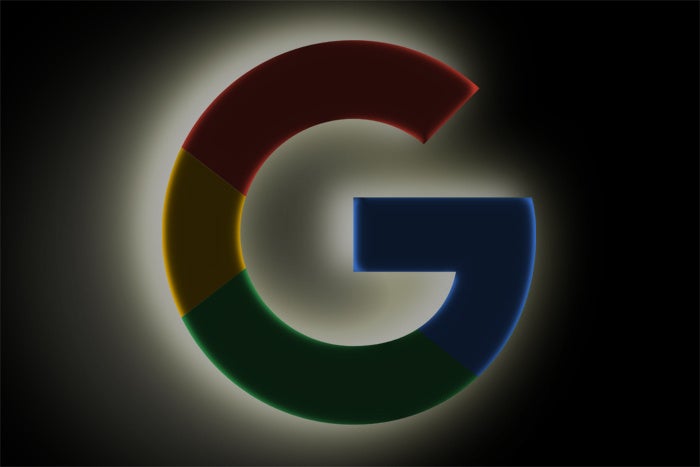If you're reading this column, there's a decent chance you're among Google's most enthusiastic users — y'know, the type of person who's super-tuned in to the company's latest launches and is always eager to try out the exciting new app or service of the moment.
And if you are such an individual, there's also a decent chance you're feeling a bit dispirited and let down right about now. The truth is, I can't blame you. I feel that way myself.
I'm not talking about the usual "Holy moly, Google's watching my every move!" kind of concern. No — if you're a Google superuser, you're well aware of the company's business model and the options available to you in that regard. What I'm talking about is the pattern Google has established of drawing its most dedicated users into new services with lofty visions and grand promises — and then, once said users have thoroughly invested in adopting those services and integrating them into their lives, changing its tune and abandoning the efforts entirely.
It's an all-too-familiar tale for those of us who follow Google closely — and while the notion itself is nothing new, the trend has been escalating to especially upsetting heights as of late.
Consider: In the span of a single month this fall, Google casually assassinated Inbox, the next-gen email app it unveiled to much fanfare four years earlier — and then killed off Google+, the "future of Google" social layer it spent endless energy convincing folks to embrace.
Neither was a broadly adopted service by Google's standards, clearly. But that's not the point. Both were services beloved by Google's most loyal and enthusiastic users — the sort of users who spread the word about useful new products and act as (often inadvertent) ambassadors for the brand. Google emphatically urged these human beings to weave these products tightly into their lives, and then the company quietly moved on when strategies shifted and shinier opportunities arose.
With Inbox, Google's sell was as lofty as ever: At its launch in 2014, the app was described as being something "years in the making" — a "completely different type of inbox, designed to focus on what really matters." The engineers behind it said it was "designed for the problems we're going to see in the next 10 years" and explicitly painted the app as being the future of not only Gmail but email itself.
The sell around Google+ might have been even grander — and the goals even more ambitious. And then there was the "cannot fail" cloud of projected confidence surrounding the whole thing. As Wired put it in 2011, when the first elements of G+ started coming into focus:
No one expects an instant success. But even if this week's launch evokes snark or yawns, Google will keep at it. Google+ is not a product like Buzz or Wave where the company's leaders can chalk off a failure to laudable ambition and then move on. "We're in this for the long run," says [then-Google+-product manager Shimrit] Ben-Yair. "This isn't like an experiment. We're betting on this, so if obstacles arise, we'll adapt."
You know what else that article noted? The fact that the "crucial test" for Google+ would be "getting loyal Google users" to embrace the service — and that one of the company's core assets for making G+ take off was that same base of users, "the vast majority of whom trust the company."
And that, dear friends, more than anything else, gets at what Google ultimately ended this autumn. It didn't just kill Google+ or Inbox; it killed the trust of its users — specifically, the most enthusiastic and loyal among them.
And let's not forget that for all the fanfare with which these services were introduced and promoted, Inbox was ended with a single tweet sent in the midst of an attention-commanding Apple event, while Google+'s demise came in the form of a broader blog post published both on a U.S. holiday and one day ahead of a headline-dominating Google hardware event. That's bad news masking at its best (or worst, depending on your perspective).
The company's underlying message is clear: Decisions revolve around numbers on paper, not interests of people. And nothing is sacred; whatever we're saying today could be ancient history by tomorrow. Use our services at your own risk and with the knowledge that they may or may not be here six months from now.
Things aren't entirely so bleak, of course: When it comes to mainstays like Gmail, Calendar, Photos, and Docs — the services that either anchor Google's enterprise-aimed G Suite program or are core elements of the company's mobile package — you can rest relatively easy assuming the services aren't going anywhere.
But even there, nothing is truly certain. Remember when Hangouts was the future of Google — the single, universal, cross-platform messaging platform to rule them all? I know I'm not the only one who exerted way too much energy getting friends, family, and colleagues to change over to Hangouts with the promise that it would simplify their lives and handle all their messaging needs. And we all know how that worked out.
We could dig up countless other examples — the most comical being when Google Reader was retired in order to push people toward Google Now and Google+ for content discovery, only to have Google Now be unceremoniously abandoned soon thereafter and now Google+ also following suit — but this fall's one-two punch of Inbox and Google+ truly exemplifies the pattern, particularly as it applies to the Google power-user community and the amount of investment involved in embracing these services.
And sure, you can always download all of your data from either — but c'mon: What are you gonna do with mountains of text-based G+ posts or piles of random Inbox reminders? The challenge of having services shut down on you so often is more about perpetually restructuring your entire workflow (and the workflows of those you counsel) than abstractly "saving your data" in some meaningless way. And yes, Google is a business, and abandoning ineffective efforts is occasionally unavoidable. When your fickleness toward your own products becomes a groan-inducing punchline, though, it's a good sign that you've failed to follow through a little too often.
I'd like to be the source of eternal sunshine here and say, "Hey, it's all right! This probably won't happen again" — but you can only be burned so many times before you start treating the source of the flame with caution. I'm also not gonna go overboard and say no one should ever use any Google service; Google makes some genuinely useful products, many of which do thrive in a long-term sense. Taking such an extreme stance would be both over the top and silly.
But to suggest approaching any new service with caution and taking the company's ephemeral enthusiasm for the Latest New Thing™ with a healthy grain of salt? That seems both warranted and wise. Google has taught us time and time again it cannot be trusted when it comes to commitment, and this past month served as the harshest reminder of all.
That, unfortunately, is a lesson that's tough to unlearn.
Sign up for my weekly newsletter to get more practical tips, personal recommendations, and plain-English perspective on the news that matters.

[Android Intelligence videos at Computerworld]




















































































